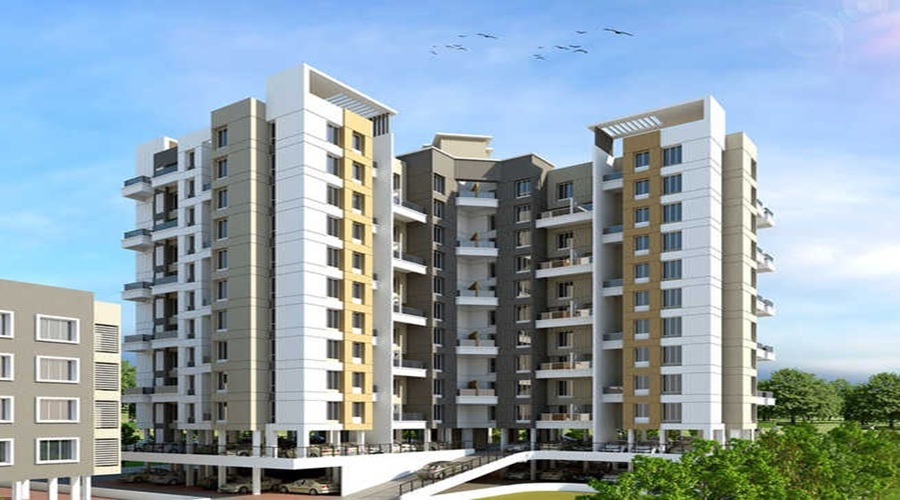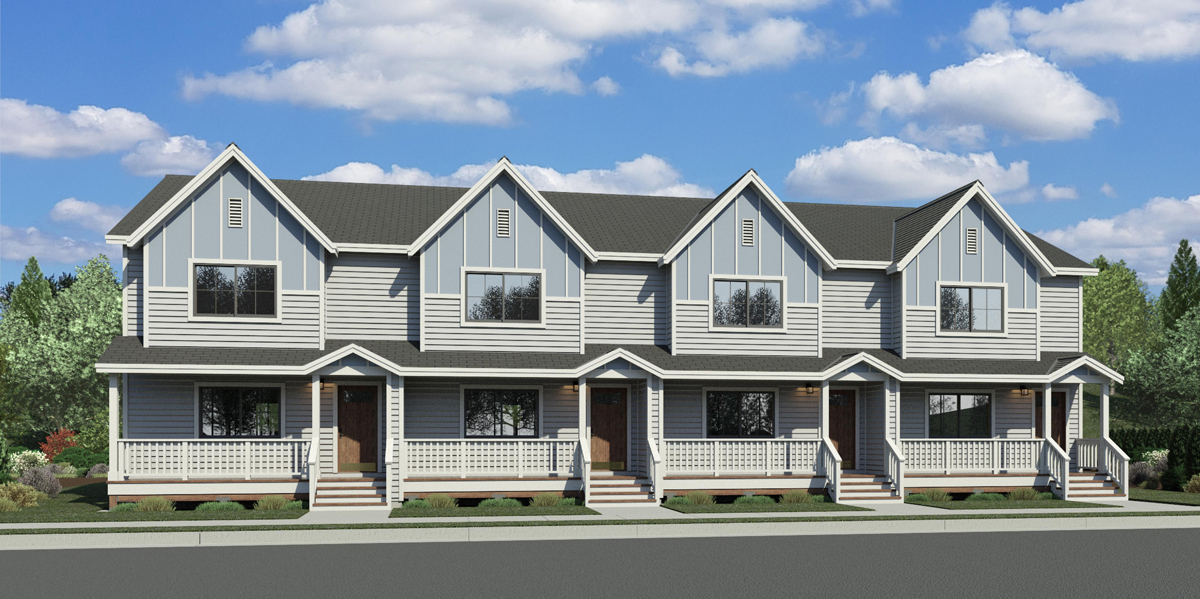Real Estate
New Homeowner’s Comprehensive Guide to Home Insurance

New Homeowner’s Comprehensive Guide to Home Insurance
Welcome to the world of homeownership! As a new homeowner, one of your most crucial responsibilities is securing the right home insurance. In this comprehensive guide, we’ll delve deeply into the essential aspects of home insurance. You’ll gain a thorough understanding of how to protect your home, safeguard your personal belongings, and ensure financial stability in the years to come.
The Foundation: Understanding Home Insurance
1. What Is Home Insurance?
Home insurance is a contractual agreement between you and an insurance company. It offers financial protection against a range of covered perils, which may include fire, theft, natural disasters, and more. This protection extends to both the structure of your home and your personal belongings.
2. Types of Home Insurance
Home insurance comes in various forms, with the most common being HO-3, designed for homeowners. Renters typically opt for HO-4, while condo owners may select HO-6. Each type offers specific coverage tailored to your unique living situation, and it’s essential to choose the one that aligns with your needs.
3. Covered Perils
Home insurance policies typically cover a set of perils, such as fire, windstorm, hail, lightning, theft, vandalism, and more. It’s crucial to review your policy to understand precisely which risks are covered and which are not.
Table 1: Types of Home Insurance
| Type of Insurance | Description |
|---|---|
| HO-3 | Most common for homeowners, covering the structure and personal belongings. |
| HO-4 | Designed for renters, covering personal belongings and liability. |
| HO-6 | Tailored for condo owners, covering personal belongings and liability. |

Image by: https://www.gobankingrates.com/
Protecting Your Home: The Components of Home Insurance
4. Dwelling Coverage
Dwelling coverage is an integral part of your policy, protecting the structure of your home. This includes your home’s roof, walls, floors, and built-in appliances. To ensure financial security in the event of a total loss, it’s essential to have enough dwelling coverage to cover the cost of rebuilding your home.
5. Personal Property Coverage
This facet of home insurance covers your personal belongings, such as furniture, electronics, clothing, and more. To ensure you have adequate coverage, it’s a good practice to create an inventory of your possessions and estimate their value.
6. Additional Living Expenses (ALE)
In cases where your home becomes temporarily uninhabitable due to a covered loss, ALE coverage comes to your aid. It can cover expenses like temporary housing, food, and transportation, ensuring you’re not left out in the cold during challenging times.
Table 2: Components of Home Insurance
| Coverage Component | Description |
|---|---|
| Dwelling Coverage | Protection for your home’s structure, including walls, roof, and built-in appliances. |
| Personal Property Coverage | Coverage for personal belongings, like furniture and electronics. |
| Additional Living Expenses (ALE) | Helps with expenses for temporary housing and living when your home is uninhabitable. |
Liability Protection: Safeguarding Your Financial Assets
7. Liability Coverage
Liability coverage is critical for protecting you in case someone is injured on your property or if you accidentally cause damage to someone else’s property. It covers legal fees and settlement costs, preventing these incidents from draining your finances.
8. Umbrella Policy
Consider an umbrella policy for additional liability coverage. This policy extends beyond what your home insurance offers, providing extra protection, especially if you have substantial assets.
Navigating Deductibles and Premiums
9. Deductibles
A deductible represents the amount you’re responsible for paying out of pocket when making an insurance claim. By choosing a higher deductible, you can lower your premiums, but it’s vital to strike a balance that aligns with your financial capacity.
10. Premiums
Premiums are the regular payments you make for your insurance coverage. The cost can fluctuate based on factors like your home’s location, coverage limits, and its age and condition. Carefully assessing these factors can help you find an insurance policy that fits your budget.
Shopping for Home Insurance
11. Comparison Shopping
The key to finding the best insurance coverage at the most competitive price lies in obtaining multiple quotes from various insurance companies. Comparing these quotes allows you to make an informed choice.
12. Bundle Your Policies
Consider bundling your home insurance with other policies, such as auto insurance, to receive valuable discounts and reduce the overall cost of insurance.
Maintaining Your Policy
13. Regular Updates
Your home and possessions change over time. Review your policy annually and update it as needed, especially if you’ve made improvements to your home or acquired valuable items. This ensures that your coverage remains aligned with your assets and living situation.
14. Documenting Valuables
Create and maintain an inventory of your personal belongings, complete with receipts and photographs. This inventory becomes invaluable when filing a claim, making the process more efficient and ensuring you receive the compensation you deserve.
Conclusion
Securing the right home insurance is a fundamental aspect of responsible homeownership. It provides protection not only for your home and personal belongings but also for your financial assets. Whether you’re a new homeowner embarking on this journey or an existing homeowner looking to reassess your coverage, this comprehensive guide equips you with the knowledge and understanding to make informed decisions about your home insurance. With the right policy in place, you can enjoy your new home with peace of mind, knowing that you’re well-prepared for whatever life may bring.
Real Estate
Property in Pune: Your Complete Guide to Buying the Best Homes

Introduction
Pune has grown into one of India’s most dynamic cities, attracting homebuyers and investors from across the country. Known for its pleasant climate, modern infrastructure, and booming IT and education sectors, the demand for property in Pune has risen steadily over the years. Whether you’re looking for a residential apartment, a luxury flat, or commercial property, Pune offers a perfect mix of lifestyle and investment opportunities.
At Properties Dekho, we bring you verified listings of property in Pune for sale to help you make confident and informed decisions. From affordable 1 BHK homes to premium 4 BHK apartments, our platform covers every segment of Pune’s thriving real estate market.
Why Choose Pune for Real Estate Investment
When it comes to stability and long-term value, few cities match Pune’s potential. The city combines modern living with a balanced lifestyle, making it ideal for both working professionals and families. If you’re planning to buy property in Pune, here’s why it’s one of the best choices you can make:
- IT and Industrial Growth: Pune’s booming IT corridor in Hinjewadi, Kharadi, and Magarpatta has created huge housing demand.
- Educational Excellence: Renowned institutions attract students and families, ensuring consistent rental returns and property appreciation.
- Quality Infrastructure: Smooth roads, metro connectivity, and green surroundings make it one of the most liveable cities in India.
- High ROI Locations: The property rates in Pune continue to appreciate across all major localities, offering great returns on investment.
These factors have transformed Pune from a peaceful city into a thriving metropolitan hub for real estate investment.
Buy Property in Pune: Options for Every Lifestyle
The Pune property market caters to everyone from first-time buyers to luxury seekers. Whether you want a modern apartment, a villa, or a commercial office space, you’ll find plenty of property in Pune for sale that fits your budget and lifestyle.
- Affordable Apartments: Ideal for small families or individuals who want a comfortable home at a reasonable price.
- Luxury Homes: Premium flats and penthouses in areas like Baner, Kalyani Nagar, and Koregaon Park offer top-notch amenities and style.
- Villas & Row Houses: Spacious living options in areas like Wagholi and Hadapsar combine peace with accessibility.
- Commercial Properties: Ideal for startups and established businesses looking for office space in Pune’s fast-developing zones.
Understanding Property Rates in Pune
Before you invest, it’s important to understand property rates in Pune. Prices vary widely depending on the location, infrastructure, and project type. Premium areas like Kharadi, Baner, and Aundh command higher prices, while developing localities such as Wagholi, Hinjewadi, and Hadapsar offer affordable options.
In the last few years, Pune’s real estate market has shown steady price appreciation due to rising employment opportunities and infrastructure growth. The metro expansion and road connectivity projects have further boosted the value of property in Pune for sale, making now a great time to invest.
Top Localities to Buy Property in Pune
Choosing the right location is key to a successful investment. Some of the most preferred areas for buying property in Pune include:
- Hinjewadi: The IT hub of Pune with numerous new housing projects and great connectivity.
- Kharadi: A rapidly developing area known for modern living and proximity to EON IT Park.
- Baner: Offers premium lifestyle amenities, great road access, and strong appreciation value.
- Hadapsar: Affordable and well-connected, perfect for first-time buyers.
- Wakad: Popular among families for its schools, shopping centers, and easy access to the Mumbai-Pune Expressway.
- Koregaon Park: A symbol of luxury living and elite lifestyle in Pune.
These localities offer everything a modern homebuyer looks for—convenience, safety, and value growth.
Buy Property in Pune with Properties Dekho
At Properties Dekho, our mission is to make your home-buying journey effortless and rewarding. We list genuine and verified properties across Pune to help you find your dream home without stress.
Why Choose Us:
- 100% verified property listings.
- Real-time updates on property rates in Pune.
- Expert consultation and property comparisons.
- Assistance with site visits, paperwork, and financing.
- Wide range of properties – from affordable flats to luxury villas.
Our platform makes it easy to browse, compare, and buy property in Pune that suits your lifestyle and budget.
Future of Real Estate in Pune
The future of Pune’s real estate market looks promising. With ongoing development projects, rising employment, and improved infrastructure, property rates in Pune are expected to continue increasing. Investors are showing growing interest in Pune’s outskirts such as Wagholi, Ravet, and Tathawade, which offer modern projects at affordable prices.
The city’s growing tech industry ensures consistent demand for property in Pune for sale, making it a smart long-term investment for both residents and non-resident Indians (NRIs).
Conclusion
Pune is more than just a city it’s a lifestyle destination where modern living meets peace and opportunity. Whether you’re planning to buy property in Pune for personal use or investment, the city offers unmatched potential and comfort.
Also Read: construction company in Lahore
Real Estate
Why Custom Home Builders Define Luxury and Comfort

Introduction
In today’s world, true luxury isn’t about marble floors or chandeliers it’s about personalization, experience, and comfort tailored to the way you live. The custom home builders leading this movement have redefined what luxury means in residential design. They understand that comfort is not one-size-fits-all, and that elegance lies in the details crafted specifically for each homeowner.
The best custom home builders don’t simply create houses; they design personal sanctuaries that balance opulence with ease. Their artistry lies in transforming dreams into physical spaces where every material, layout, and finish feels intuitive and deeply personal.
Luxury today isn’t about excess it’s about harmony. And that’s precisely what skilled custom builders deliver.
The New Meaning of Luxury in Home Design
1. Beyond Aesthetics: A Matter of Experience
Luxury used to mean visible extravagance—grand staircases, ornate details, and glossy finishes. But modern luxury, as envisioned by custom home builders, is quieter and more meaningful. It’s the ability to live comfortably and beautifully, surrounded by spaces that reflect your life, values, and rhythms.
A luxurious home today feels effortless. It flows naturally, adapts to your needs, and supports a sense of calm. It’s built with materials that age gracefully, technology that simplifies daily life, and craftsmanship that never needs attention yet always commands it.
2. Tailored for the Individual
The best custom home builders redefine luxury by designing from the inside out. Instead of imposing trends, they start with you—the way you cook, entertain, work, rest, and move through space. Every design decision, from the orientation of a window to the placement of a reading nook, responds to your habits and aspirations.
Personalization is the new prestige. And in that sense, the truest luxury is individuality.
Craftsmanship as the Foundation of Comfort
1. Built, Not Manufactured
There’s a world of difference between a house that’s built and one that’s produced. The custom home builders who excel know that comfort begins long before the first wall goes up. It’s embedded in the planning, precision, and attention to detail that define handcrafted construction.
Every curve, joinery, and texture is deliberate. These builders view a home as a long-term companion, not a commodity. That devotion to craftsmanship ensures that comfort isn’t just felt—it’s built into the DNA of the structure.
2. Materials That Speak of Quality
Luxury is tactile. It’s the feel of solid wood underfoot, the smooth glide of a perfectly fitted door, the quiet confidence of natural stone. The best custom home builders choose materials not just for their look, but for their longevity and emotional resonance.
Whether it’s reclaimed timber with a story or sustainably sourced marble that glows in natural light, every material is a reflection of care. When chosen thoughtfully, materials make a home feel warm, grounded, and timeless.
The Science Behind Seamless Comfort
1. Smart Design Meets Smart Living
Luxury today isn’t loud it’s intelligent. Modern custom home builders integrate cutting-edge technologies that simplify life without overwhelming it. From climate control systems that learn your preferences to lighting that adjusts to your mood, comfort now extends beyond physical design to digital responsiveness.
A truly luxurious home anticipates your needs. It opens the blinds as the sun rises, warms the floors before you step out of bed, and keeps you secure with subtle automation. The best custom home builders know how to weave technology into the home’s fabric so it enhances daily living without ever intruding.
2. Spatial Psychology: Comfort Through Design
Luxury isn’t always visible it’s often felt subconsciously. Great builders understand how proportions, lighting, acoustics, and flow shape emotional comfort.
Spaces that breathe, transitions that feel natural, and layouts that promote togetherness or solitude when needed—these design choices elevate not just aesthetics but wellbeing. Most custom home builders use science-backed design principles to create homes that are intuitively livable and emotionally satisfying.
The Balance of Beauty and Function
1. Form That Serves Function
Luxury fails when it sacrifices usability. The genius of great custom home builders lies in balancing elegance with everyday practicality. A stunning kitchen is worthless if it doesn’t make cooking enjoyable; a spa-like bathroom must also function flawlessly under daily use.
The best custom home builders approach every design decision through the lens of livability. They ensure storage is hidden but accessible, lighting flatters both space and people, and materials endure without constant upkeep.
This seamless blend of beauty and purpose defines comfort at its highest level.
2. Outdoor Spaces as Extensions of Living
True luxury living no longer stops at the threshold. Custom builders design landscapes and outdoor areas as natural continuations of the home spaces for relaxation, connection, and retreat.
From covered patios with integrated kitchens to serene garden lounges and infinity-edge pools, every outdoor feature complements interior design while celebrating nature. The result is comfort that transcends walls—a holistic experience of luxury living.
Collaboration: The Secret Ingredient of Great Builders
1. Listening as an Art
What sets custom home builders apart from ordinary contractors is their ability to listen deeply. Luxury homes are never dictated—they are co-authored. The builder becomes a creative partner, understanding not just the client’s vision but their lifestyle, aesthetic preferences, and emotional desires.
This collaboration ensures that every decision, from architectural flow to fixture selection, resonates personally. The best custom home builders translate conversations into architecture, turning words like “warm,” “open,” or “welcoming” into tangible spaces that evoke those exact feelings.
2. Managing Complexity Gracefully
Behind the serenity of a finished luxury home lies a complex choreography of architects, designers, craftsmen, and engineers. The finest builders manage this dance effortlessly.
Their expertise lies in uniting all disciplines toward one coherent vision. They anticipate problems before they arise, maintain transparency, and protect the client’s peace of mind. That level of professionalism—rare and refined—is itself a form of comfort.
Sustainability: The New Face of Luxury
1. Building Responsibly for the Future
Luxury is evolving to include conscience. The custom home builders defining the modern era understand that true sophistication respects the planet. Sustainable design has become an intrinsic part of comfort, offering both ecological and emotional value.
The best custom home builders use eco-friendly materials, design for energy efficiency, and incorporate renewable systems like solar and geothermal energy. They build homes that breathe naturally, maintain consistent indoor climates, and minimize waste during construction.
A sustainable home feels good to live in—and even better to know it’s kind to the earth.
2. Wellness as a Design Principle
Beyond sustainability, comfort now includes health. Great builders are incorporating wellness architecture: air purification, water filtration, natural light optimization, and acoustically balanced rooms.
These innovations create spaces that not only look luxurious but also nurture physical and mental well-being. In essence, luxury becomes synonymous with living well.
Conclusion: The True Definition of Modern Luxury
Luxury and comfort today are defined by authenticity, craftsmanship, and emotional connection. The custom home builders shaping this new standard know that beauty means nothing without livability, and that comfort must be personal, not generic.
The best custom home builders understand that the real art lies in making complexity look effortless. Through their vision, homes become sanctuaries places that inspire, embrace, and endure.
Luxury is no longer about what you have, but how it feels to live within it. And that feeling begins with the hands, hearts, and minds of custom builders who understand both the science of space and the soul of home.
Real Estate
Smart Choice Brand New Townhouse in Riverstone for First-Time Buyers
-
Business2 years ago
Cybersecurity Consulting Company SequelNet Provides Critical IT Support Services to Medical Billing Firm, Medical Optimum
-
Business2 years ago
Team Communication Software Transforms Operations at Finance Innovate
-
Business2 years ago
Project Management Tool Transforms Long Island Business
-
Business2 years ago
How Alleviate Poverty Utilized IPPBX’s All-in-One Solution to Transform Lives in New York City
-
health2 years ago
Breast Cancer: The Imperative Role of Mammograms in Screening and Early Detection
-
Sports2 years ago
Unstoppable Collaboration: D.C.’s Citi Open and Silicon Valley Classic Unite to Propel Women’s Tennis to New Heights
-
Art /Entertainment3 years ago
Embracing Renewal: Sizdabedar Celebrations Unite Iranians in New York’s Eisenhower Park
-
Finance3 years ago
The Benefits of Starting a Side Hustle for Financial Freedom































